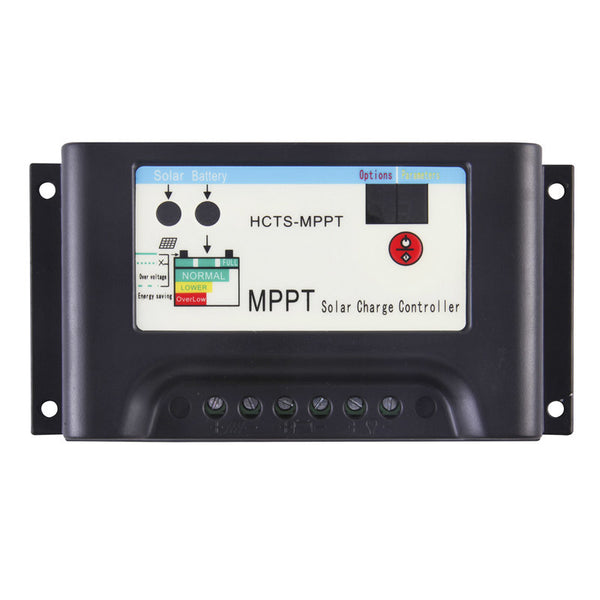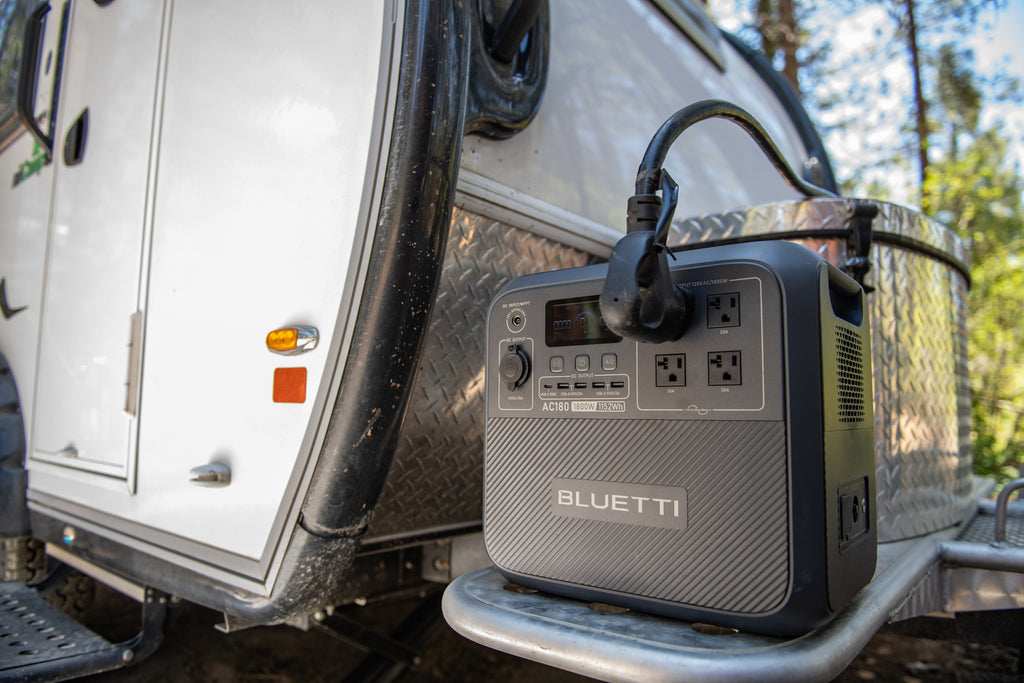Harvesting power from the sun for use in off-grid power systems involves more than one gathering solar energy and converting it into electricity. It's a matter of making sure that the energy stored in the batteries is ready to be used whenever the time dictates. However, this objective is not accomplished by simply hooking a solar panel to a battery. It takes something that will regulate the amount of charge being pumped into the battery. One of them is deemed efficient and made just for this—the charge controller—and best is regarded among the lot. Its brand name is MPPT (Maximum Power Point Tracking). This device moderates the cycle of charging to your battery and helps maximize your solar power system. The post will focus on the different operations and benefits that come along with an MPPT charge controller.
What Is an MPPT Charge Controller?
This is one of the advanced devices used in a solar power system. It basically works as a DC-to-DC converter that takes the voltage from solar panels and scales it to the required input level, hence enabling your battery to charge. This process ensures that the energy harnessed and generated by your system is maximized without any potential wastage.
MPPT stands for Maximum Power Point Tracking, and it is the only ability of a controller to track points that are most efficient in your system. These vary based on some causes, among them the time of the day, amount of cloud cover, and temperature of the solar panels. Always monitoring these and other factors, the MPPT controller will keep your system operating at its most proficient level.

This is because, in most cases, when solar panels gather power, they often produce more current than what your batteries are capable of accommodating. You need a system that will be keen on influencing and controlling the amount of charge getting into the battery for the most efficient flow and storage. The MPPT charge controller comes in to handle the management of voltage (which is the pressure of electrons in the system) and amperage (the flow or current of volts) in just the right combination that produces optimally measured power in watts.
If you are assembling your system, you could, however, buy a separate MPPT controller. Some products, such as BLUETTI Power Kits, come installed with built-in MPPT solar charge controllers straight out of the factory. The kit has an extra battery charger from MPPT and may also include additional solar charge controllers. Always refer to the product details of your solar generator or portable power station to find out whether a charge controller is included or is to be bought separately. This emphasizes one of the most critical aspects: compatibility, especially in a case where the entire constituent has been sourced independently from the producers.
How Does the MPPT Charge Controller Work?
The Maximum Power Point Tracking (MPPT) charge controller included here helps to add efficiency to your solar power system because it balances both the power input and battery levels. In this case, the battery makes a slight adjustment to balance in amps and volts to yield maximized wattage. And since a battery only allows some level of voltage, it adjusts the amperage output to enable it to accept full total wattage produced by the panel.
It will locate the most power point, a balance between voltage and amperage which will make the most power while not wasting energy. The perfect levels of amperage and voltage will necessarily fluctuate throughout the day because of shifts in the sun's position, as well as the interference of clouds and temperature. Such factors are supervened and controlled digitally by the MPPT charge controller. It relentlessly monitors and adjusts the current from the panel and the voltage into the battery to approach the maximum power point. This results in perfect system performance.
Which is Better PWM or MPPT?
There are two solar charge controllers: Maximum Power Point Tracking (MPPT) and Pulse Width Modulation (PWM). For the PWM type, this is achieved by rapidly opening and closing a transistor to manage the current from the panels. It, however, acts only on the current and not the voltage, which prevents it from exploiting the total wattage.
Whereas the MPPT controller is able to make adjustments both in voltage as well as current, hence enabling it to take care of excellent power output in this case. Every panel can be calibrated with a view of the difference and therefore increase the performance.
Solar systems are not very effective; they usually manage to convert only 15-20% of sunlight taken in into electrical power. In order to ensure efficiency from your system, one cannot then think of settling for a PWM controller, which further wastes more energy as heat and influences just one-half of the power equation. An MPPT controller excels in that to be the best choice, though.
Benefits of an MPPT Solar Charge Controller
It optimizes power transfer efficiency by adjusting voltage and current, ensuring your system captures maximum power from your solar panels' rated wattage. This then relates back to the most important reason in the attainment of optimal performance in regard to all your electricity needs.
The advanced MPPT controller adapts to all changes in the environment, and your system will have less dependence on weather conditions, extracting maximum output even from overcast days. This means that you may need fewer panels to satisfy your energy needs, which will not only save you money but also give you more freedom about where to place them.
For the larger systems, the performance advantage that they have over an MPPT controller will be far greater. This truly does help to maximize the power that each of your panels is able to produce and therefore what you get out of each individual addition to your system. And while an MPPT controller costs slightly more than a Pulse Width Modulation (PWM) controller, it performs better and gives a quicker return on investment through reduced energy costs and a reduction of your carbon footprint.
Can You Use an MPPT controller Management BLUETTI Portable Power Station?
Sure enough, a BLUETTI portable power station would work wonderfully with an MPPT (Maximum Power Point Tracking) controller. The controller perfectly balances the transmitted power from the solar panels, making such a perfect combination for use in solar energy systems.
Many BLUETTI portable power stations have built-in support to work flawlessly with MPPT controllers. Here are three best-in-class options:
BLUETTI AC180 Solar Portable Power Station

It is versatile and powerful, featuring up to 1800W of AC power with a surge capacity of 2700W. Depending on its variant, one gets either 1,152Wh-AC180 or 1,440Wh-AC180P with this device, a high capacity that provides an astonishing 11 different output ports that can be recharged in many ways, such as AC, solar, and the car, with an intelligent control feature from the BLUETTI app. With a 1,440W AC input, the battery takes 45 minutes from empty to 80%. Thus, it's your solution to an eco-friendly, silent, clean, and economical response to all your powerhouse requirements.
BLUETTI AC200L Portable Power Station

It features an enormous 2,048Wh energy storage capacity. To begin with, it has a pure sine wave AC output unit, which is rated at 2400W, coupled with up to 3,600W up for grabs from the consumers and tagged with a high output surge on AC. When combined with one B230 unit, it doubles the storage to 4,096Wh, and quadruples this again to 8,192Wh with two B300 units. Besides, it provides six charging options (AC/Solar/Car/Generator/Lead Battery/AC+Solar) and interestingly, via a 2,400W AC source, it charges to an astounding 80% level in only 45 minutes. Thus, it brings the best user experiences to your hands with intelligent control and monitoring through Bluetooth & WiFi using the new BLUETTI App.
BLUETTI AC200P Portable Power Station

The setup stands out with 2,000Wh capacity. It offers an AC pure sine wave inverter capacity rated at 2,000W and a peak to 4,800W. It has a LiFePO4 battery with over 3,500 life cycles to 80%, with a total of 17 output ports, serving a range of purposes. Besides, it has seven ways of input charging (AC, Solar, Car, Generator, Lead battery, Dual AC, AC+Solar) and can take up to 700W of solar input—that's more than most of its competition. In addition, it charges fast when Solar + AC Adapter are together (up to 1100W max.), making it environmentally silent and cost-efficient.
Do I Really Need an MPPT Charge Controller?
Whether or not an MPPT charge controller will be required depends on your particular needs and usage. If your system is small or the location very sunny, then the incremental power increase with frequent adjustments of an MPPT controller may not be worth the extra cost. However, for most other applications, the MPPT controller's efficacy at optimizing energy production and storage accelerates the payback on your investment. This will optimize your system, minimize energy loss, and ensure year-on-year peak performance. After all, these are the units that are going to speed up the process to a favorable return on investment.
Final Thoughts
Harnessing solar power is a big commitment, and an MPPT controller is the powerful, flexible tool that can really expand upon that commitment. This ensures that your solar panel system operates at its most optimum performance, transferring maximum power from solar panels to your home. Whether you’re using a BLUETTI station or another type of setup, this controller will be a great addition. It’s not just about harnessing daylight energy; it entails doing it right. Your investment deserves the best return possible.




